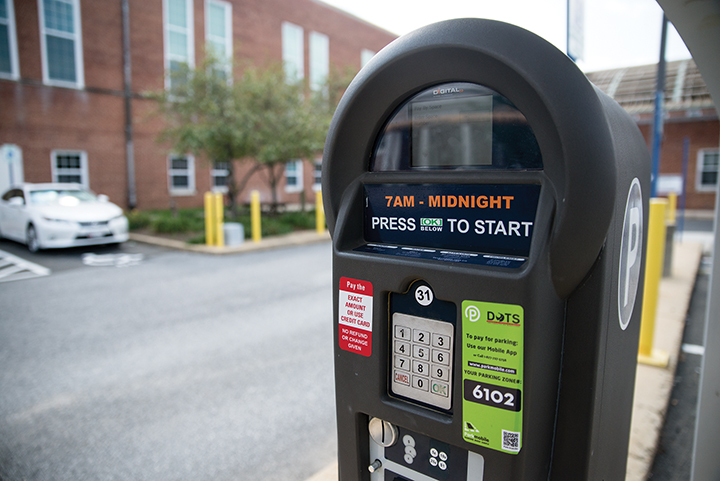The 600-space parking garage DOTS announced at a Jan. 31 RHA meeting could have 300 more spaces.
After the Department of Transportation Services’ budget suggested they provide an extra 2 percent salary increase for all University of Maryland employees, the Campus Transportation Advisory Committee — a part of the University Senate — met Jan. 30 to discuss the increase, as well as the use of funds if not used for salaries.
Read more: UMD DOTS is proposing a 600-space parking garage to address shortages
The Campus TAC voted “very overwhelmingly” that, if the 2 percent was not funding the salary increase, it should help grow the garage so it has 900 spaces rather than 600 spaces, said Department of Transportation Services Director David Allen.
Despite the request for salary hikes, the “current state of the state and the university tell us that’s probably not going to happen,” Allen said. “That’s probably not going to go forward, but we still have it in our budget.”
Given that CTAC is made up of eight faculty and staff members, eight students and one additional position either faculty or students can fill — and because on-campus students represent only about 9 percent of overall parkers — “it’s going to be hard for RHA to get much traction on negating that CTAC committee,” Allen said.
The Residence Hall Association’s Transportation Advisory Committee — an RHA committee comprised of university students — is set to meet on Friday to review DOTS’ budget, ask questions and provide input. After the meeting, it will make a recommendation and present it to the RHA at the next Senate meeting on Tuesday.
“It’s a small parking garage,” said RHA TAC Chairman Matt O’Brien. “I think it’s only worth building if the 2 percent is allocated toward the garage… we’ll see what [RHA] TAC has to say about it.”
If approved, the resolution would become the official recommendation of the RHA.
If it isn’t used for salaries, said O’Brien, a freshman economics major, there are other options to consider.
“You could give it directly to the students in terms of fee decreases, you could allocate it to some other project, like the parking garage, you could give it to your employees — if it’s not mandated, you still could do it.”
From fiscal 2017 to fiscal 2018, there is an expected $200,000 parking revenue net decrease, resulting in a likely 10.3 percent increase for student resident parking permits. The revenue net decrease is largely due to eliminating freshman resident parkers, of which there are about 500. Though freshman parking spots are supposed to be eliminated, there may be some exceptions.
“[RHA’s TAC] need[s] to create a mechanism for any exceptions there might be, if they want to have exceptions,” Allen said. “Our plan would be to let RHA … make [about] 50 exceptions, and they then would be able to create their own criteria, determine who those [about] 50 resident students are, and they will let them register.”
The department directors who meet with RHA’s committees “are very receptive to student need and student wishes,” said RHA Vice President and former RHA TAC chairwoman Sasha Galbreath.
“We are speaking on behalf of 12,500 students,” Galbreath said. “They definitely consider [our ideas] because at the end of the day, it doesn’t matter where the idea comes from. It just matters that it happened.”
The parking lot’s location has not yet been decided.
CORRECTION: Due to an editing error, a previously version of this story incorrectly had RHA TAC Chairman Matt O’Brien referencing Campus TAC instead of RHA TAC. The story also incorrectly stated that CTAC is made up of 11 faculty and staff members and one student. It is made up of eight faculty and staff members, eight students and one additional position that a staff member or student could fill. This story has been updated.



